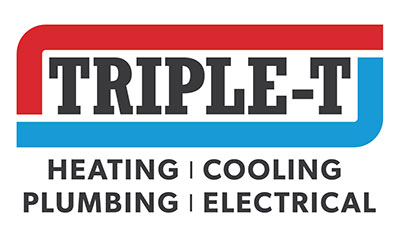Dealing with a Garbage Disposal Leak
Is there a foul odor in your kitchen you can’t quite place? Do you hear a drip, drip, drip coming from under the sink? You may want to move the dishwasher detergent and cleaning supplies aside to see if there’s a puddle of dirty water in the cabinet. If so, a leaking garbage disposal is the most likely culprit.
This plumbing problem can cause significant water damage if left unaddressed. That’s why you should explore how to stop a garbage disposal leak as soon as you discover it. If you consider yourself a handy homeowner and feel comfortable with a do-it-yourself project, follow this guide on repairing a garbage disposal leak. Otherwise, call a plumber right away to save yourself the hassle.
Locate the Source of the Leak
Garbage disposals can develop leaks in several different places. Therefore, you need to do a little detective work to zero in on its location. Here’s what to do:
- Unplug the garbage disposal from the wall outlet to prevent electric shock while you work.
- Wipe the disposal dry to remove any residual water.
- Plug the sink with a watertight stopper.
- Fill a container with water and mix in a few drops of bright food coloring.
- Pour the dyed water into the stopped-up sink.
- Aim a flashlight toward the garbage disposal and, when you’re ready, ask another person to remove the stopper from the sink.
- Look for leaks coming from the dishwasher connection or the top, side, or bottom of the garbage disposal. Run a white rag over these locations, checking it often for dampness caused by the colored water.
If the source of the garbage disposal leak is not immediately apparent, call a plumber for help finding and fixing the problem.
Stop the Leak in Your Garbage Disposal
The proper fix depends on where the leak is located.
If the Leak Comes from the Dishwasher Connection…
Check the hose connecting the garbage disposal to the dishwasher. If the metal clamp is loose, tighten it with a screwdriver. If the hose is cracked or dried out, replace it. First, find a replacement hose at a hardware store. Then, remove the old hose and install the new one in its place. Be sure to tighten the clamp securely. Otherwise, you could end up with a worse leak than you started with.
If the Leak Comes from the Top of the Garbage Disposal…
You need to reseal and tighten the metal sink flange sitting directly inside the drain. This component is typically sealed around the top with plumber’s putty and secured from the underside with bolts. If the putty has deteriorated or the bolts are loose, the flange will not create a watertight seal, and the disposal will leak at the top.
To reseal a leaky flange, you’ll need to detach the garbage disposal, drain pipe, dishwasher hose, and mounting assembly. Once those are out of the way, you can scrape off the old plumber’s putty and insert a new “rope” of putty in its place. When reattaching the mounting assembly, take care to secure the bolts tightly to prevent future leaks. Then, reinstall the remaining garbage disposal parts.
If the Leak Comes from the Side of the Garbage Disposal…
You need to replace the rubber gasket inside the main drain pipe. First, loosen the screws securing the pipe to the disposal and inspect the gasket inside. If it’s worn out, purchase a replacement. Install the new gasket, retighten the drain pipe screws, and you should be good to go.
If the Leak Comes from the Bottom of the Garbage Disposal…
One or more seals on the interior shell have likely deteriorated, or the shell itself has cracked. As a result, water seeps into the shell and leaks from the unit’s base, often through the reset button. This problem is most common in older garbage disposals, so paying to fix an internal seal is usually not worth the cost. In this case, your best bet is to install a new unit.
Replace Your Garbage Disposal If Needed
Depending on the age and condition of your garbage disposal, you may decide to replace it rather than repair it. You should be able to complete this task with only basic plumbing knowledge. However, if you don’t have the time, skills, or physical capabilities to do the job yourself, leave it to an experienced plumber.
Check Your Work
Once you think you have repaired the garbage disposal leak, check for any trouble spots by repeating the dyed-water test used to locate the leak in the first place. If you don’t detect any colored water seeping from the unit, feel free to plug it back in and start using your kitchen sink like normal again.
Prevent Future Leaks
Using your garbage disposal correctly can help it remain in good working order. Here are the best ways to keep the unit leak-free:
- Only grind soft scraps of food. Hard bones, fruit pits, and apple cores can dislodge or damage the internal seals and cause a leak.
- Run cold water down the sink before and after grinding up food to prevent overheating and other damage.
- Inspect your disposal for leaks twice a year. Look for any visible puddles and conduct the dyed-water test to catch and repair minor problems before your cabinets or kitchen floors become waterlogged.
If you’re still having garbage disposal trouble, turn to Triple T Heating, Cooling & Plumbing. We can repair or replace your garbage disposal to help your kitchen function at its peak once more. With nearly 50 years of experience providing exceptional plumbing services and leaving our customers completely satisfied, you can trust us to get the job done right the first time. So give us a call at 801-798-7711 or contact us online to schedule garbage disposal repair or other plumbing services in Utah County.


